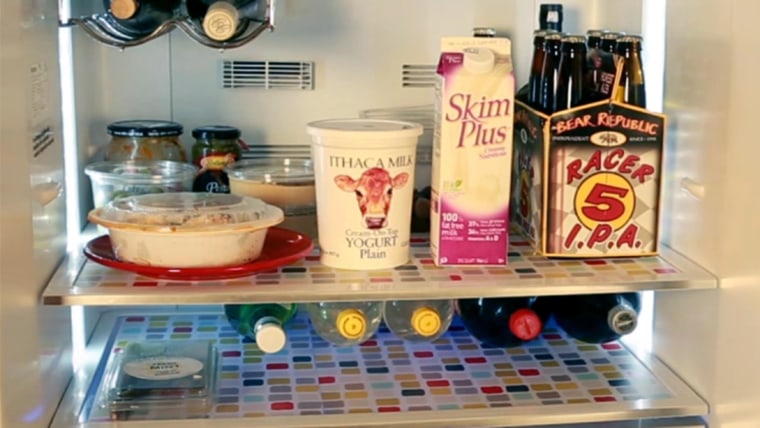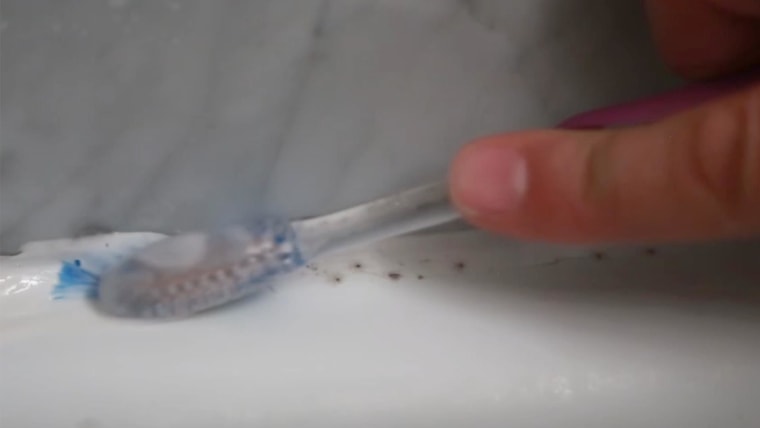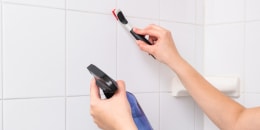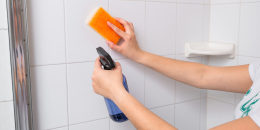Popeye was strong, but it was Olive Oyl who deserved a medal for removing all the spinach stains from her beau’s shirts. (If you didn't know, he never did his own laundry!)
For anyone who's ever faced a spinach stain, you know how tough those veggie spots can be. To help, TODAY Home asked cleaning pros for advice.
How to remove spinach stains from clothing
Cleaning pro Leslie Reichert tells us how to banish these green stains from our wardrobe easily,
- This is a tough stain if you let it sit, so try to take care of it as soon as possible.
- Pretest the enzyme detergent in an inconspicuous spot on the garment for 15 minutes. Allow the area to dry. If there is no color loss, proceed with the following directions.
- Remove any solids from the stained area.
- Pretreat the stain by applying an enzyme detergent to it.
- Allow the enzyme detergent to work for 15 minutes or according to package directions.
- Using a stiff brush, work the detergent further into the stain.
- Let it sit again for about 15 minutes.
- Wash as usual.
- Repeat, if needed.
- Do not dry garment until the stain is completely gone.
How to remove spinach stains from upholstery
Michael Jacobs, of Service Pros Local, removes spinach on water-safe upholstery with these steps.
Note: He does not recommend doing these steps on silk, wood, antique or vintage upholstery.
- Follow directions on the care label of the furniture. If it approves the following stain-removing products, then proceed.
- Dab the stain with a clean white cloth moistened with isopropyl alcohol. Using a white cloth enables you to easily see if the color is transferring from the stain. This should remove the stain completely.
- If the stain remains, treat it with a liquid oxygen bleach or mix a few drops of enzyme-based liquid laundry detergent, 1 tablespoon of baking soda and ½ cup of water. (Since these products can remove color from fabric, test in an inconspicuous area first.)
- Using a clean white cloth, gently rub a small amount of the solution into the stain, starting at the outside of the stain and working inward. (Less is best when it comes to cleaning upholstery.)
- Allow this to work for 5 minutes.
- Rinse out the cleaning residue by repeatedly dabbing the area with a damp cloth.
- Blot with a clean towel to remove as much moisture as possible.
How to remove spinach stains from carpet
Jack White, vice president of technical service for Rainbow International, offers two methods for cleaning this unsightly stain. One uses DIY cleaners, while the other relies upon a commercial carpet-cleaning product. Because almost all of today’s wall-to-wall carpets are made of 100-percent synthetic materials, White says spots and spills are easier to remove than ever before.
Note: He does not recommend either method for wool or silk carpets.
Method 1: DIY
- Remove any spinach residue with a towel.
- Apply a solution of 1 teaspoon of dish-washing detergent in 1 cup of water.
- Starting at the outer edges and moving toward the center, work the detergent solution into the spot with a white cotton towel.
- Rinse by alternately dabbing the spot with a wet white cloth and blotting until dry.
- If residual color remains, you can try to remove it by dabbing the stain with hydrogen peroxide.
- Rinse peroxide from the carpet by alternately dabbing the area with wet and dry cloths.
- Blot until dry.
Method 2: Commercial carpet-cleaning product
- Always use a CRI Certified Seal of Approval carpet-cleaning product.
- Pretest the cleaner on a scrap of carpet or in an out-of-the-way area.
- Follow the product’s directions carefully.
- Apply a small amount of cleaner — more is not better — to a white cloth and work in gently, from the edges to the center.
- Blot, don’t scrub. You may need to do this several times to remove the spot.
- After the spot is gone, blot the area with clear water once or more to remove any remaining product.
- Blot the area dry.











